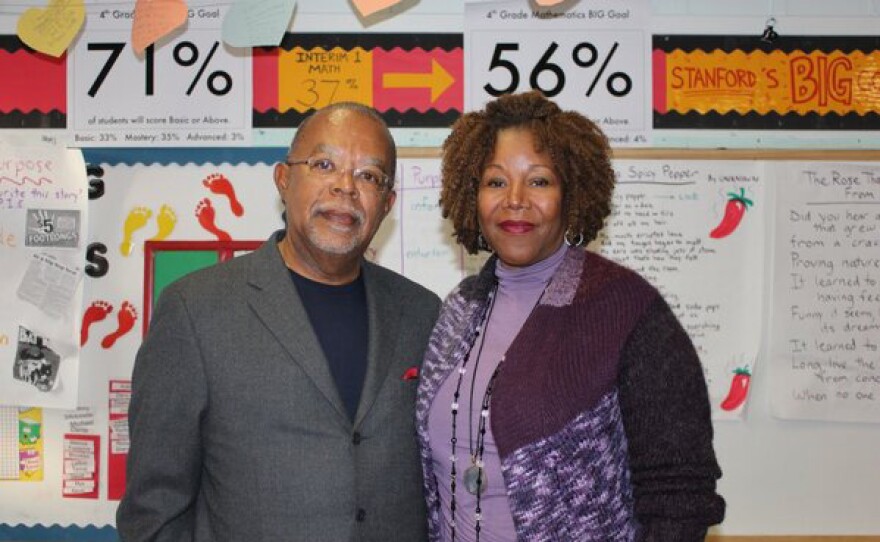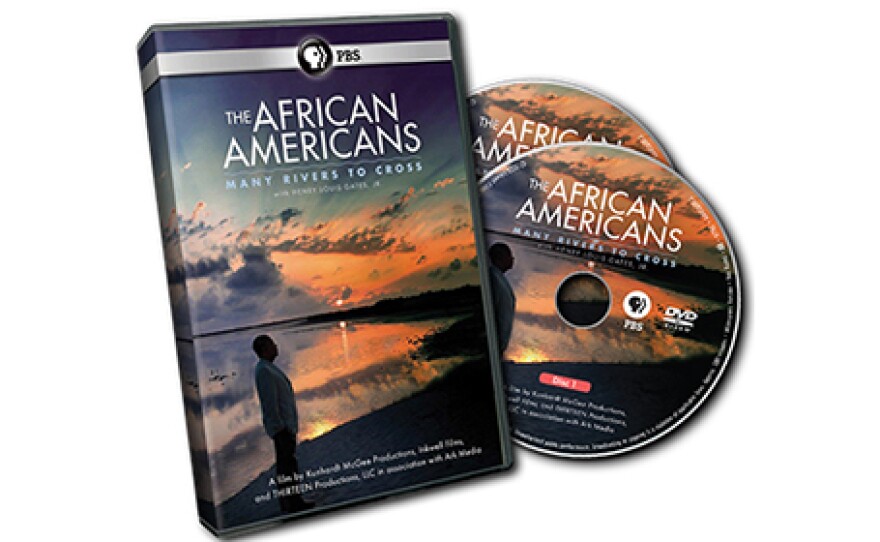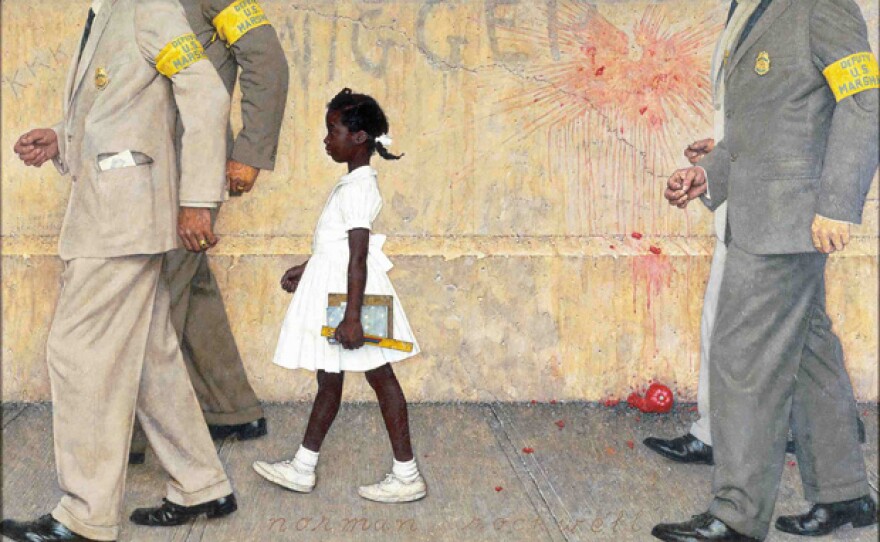Stream on demand now with KPBS Passport!
This six-hour series chronicles the full sweep of African-American history, from the origins of slavery on the African continent through more than four centuries of remarkable historic events up to the present.
Presented and written by Harvard scholar Henry Louis Gates, Jr., the series draws on some of America’s top historians and heretofore untapped primary sources, guiding viewers on an engaging journey across two continents to shed new light on the experience of being African American.
Among those interviewed are Kathleen Cleaver, Charlayne Hunter-Gault, Congressman John Lewis, civil rights activist Diane Nash and more.


EPISODE GUIDE:
Episode 1: "The Black Atlantic (1500-1800)" repeats Saturday, Feb. 27 at 9:30 am. p.m. and 10:30 p.m. on KPBS TV - “The Black Atlantic” explores the global experiences that created the African-American people. Beginning a century before the first documented “20-and-odd” slaves who arrived at Jamestown, Virginia, the episode portrays the earliest Africans, slave and free, who arrived on these shores.
The transatlantic slave trade soon became a vast empire connecting three continents. Through stories of individuals caught in its web, the episode traces the emergence of plantation slavery in the American South and examines what the late 18th-century era of revolutions — American, French and Haitian — would mean for African Americans and slavery in America.
Episode 2: "The Age of Slavery (1800-1860)" repeats Saturday, Feb. 27 at 10:30 a.m. and 11:30 p.m. - “The Age of Slavery” illustrates how black lives changed dramatically in the aftermath of the American Revolution. For free black people, these years were a time of opportunity, but for most African Americans, the era represented a new nadir.
King Cotton fueled the rapid expansion of slavery into new territories and the forcible relocation of African Americans to the Deep South. Yet as slavery intensified, so did resistance. From individual acts to mass rebellions, African Americans demonstrated their determination to undermine and ultimately eradicate slavery.
Episode 3: "Into the Fire (1861-1896)" repeats Saturday, Feb. 27 at 11:45 a.m. and Sunday, Feb. 28 at 12:45 a.m. - “Into the Fire” examines the most tumultuous and consequential period in African-American history: the Civil War and the end of slavery, and Reconstruction’s thrilling but brief “moment in the sun.” From the beginning, African Americans were agents of their liberation — by fleeing the plantations and taking up arms to serve in the United States Colored Troops.
After Emancipation, African Americans sought to realize the promise of freedom — rebuilding families shattered by slavery; demanding economic, political and civil rights; even winning elected office — but a few years later, an intransigent South mounted a swift and vicious campaign of terror to restore white supremacy and roll back African-American rights. Yet the achievements of Reconstruction remained in the collective memory of the African-American community.
Episode 4: "Making a Way Out of No Way (1897-1940)" repeats Saturday, Feb. 27 at 12:55 p.m. and Sunday, Feb 28 at 1:55 a.m. - “Making a Way Out of No Way” portrays the Jim Crow era, when African Americans struggled to build their own worlds within the harsh, narrow confines of segregation. At the turn of the 20th century, a steady stream of African Americans left the South, fleeing the threat of racial violence and searching for opportunities in the North and West.
Leaders like Ida B. Wells, W.E.B. Du Bois, Booker T. Washington and Marcus Garvey organized, offering different strategies to further black empowerment and equality. The ascendance of black arts and culture showed that a community with a strong identity and sense of pride was taking hold in spite of Jim Crow. “The Harlem Renaissance” redefined how America saw African Americans — and how African Americans saw themselves.
Episode 5: "Rise! (1940-1968)" repeats Saturday, Feb 27 at 2:10 p.m. and Sunday, Feb. 28 at 3:10 a.m. - “Rise!” examines the long road to civil rights, when the deep contradictions in American society finally became unsustainable. African Americans who fought fascism in World War II came home to face the same old racial violence. But mass media—from print to radio and TV—broadcast that injustice, planting seeds of resistance. The success of black entrepreneurs and entertainers fueled African-American hopes and dreams.
In 1955, Rosa Parks refused to give up her seat on a city bus in Montgomery, Alabama, heralding the dawn of a movement of resistance, with Dr. Martin Luther King, Jr. as its public face. Before long, masses of African Americans practiced this nonviolent approach to integrate public schools, lunch counters and more. Nonviolence, however, was often met with violence. In 1968, Dr. King was assassinated, unleashing a new call for “Black Power” across the country.
Episode 6: "A More Perfect Union (1968-2013)" repeats Saturday, Feb. 27 at 3:30 p.m. and Sunday, Feb. 28 at 4:30 a.m. - After 1968, African Americans set out to build a bright future on the foundation of the civil rights movement’s victories, but a growing class disparity threatened to split the black community. As African Americans won political office across the country and the black middle class made progress, larger economic and political forces isolated the black urban poor.
When Barack Obama was elected president in 2008, many hoped that America had finally transcended racism. By the time of his second victory, however, it was clear that many issues, including true racial equality, remain to be resolved. How will African Americans help redefine the United States in the years to come?
Henry Louis Gates, Jr.'s 100 Amazing Facts About the Negro
In 1934, Joel Augustus Rogers, a highly regarded journalist in the black press, published a remarkable little book of 51 pages titled "100 Amazing Facts About the Negro With Complete Proof: A Short Cut to the World History of the Negro." I have been intrigued by this book, and by its author, since I first encountered it as a student in an undergraduate survey course in African-American history at Yale, taught by the venerable American historian, William S. McFeely. Fifty of the 100 Amazing Facts will be published on THE AFRICAN AMERICANS: MANY RIVERS TO CROSS website.
Watch On Your Schedule:
Extend your viewing window with KPBS Passport, video streaming for members supporting KPBS at $60 or more yearly, using your computer, smartphone, tablet, Roku, AppleTV, Amazon Fire or Chromecast. Learn how to activate your benefit now.
JOIN THE CONVERSATION:
Henry Louis Gates, Jr. is on Facebook. Follow @HenryLouisGates on Twitter.





